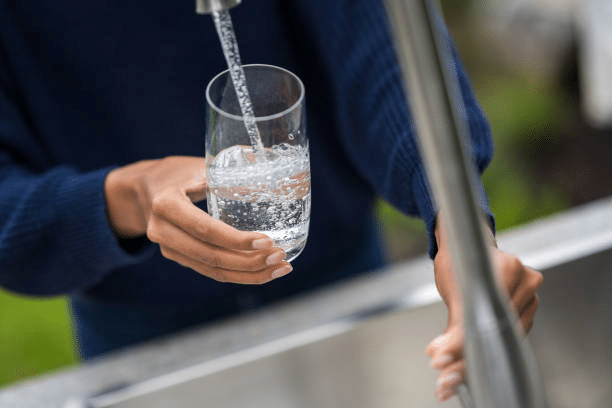In a world where clean water is paramount, the lurking concern of atrazine affects your tap water and your hormones. Atrazine, a widely used herbicide in agriculture, has raised significant questions about its impact on human health and the environment. This comprehensive guide delves into the intricate relationship between atrazine contamination in tap water and its potential effects on our hormonal systems.
Understanding Atrazine

Atrazine is a herbicide belonging to the class of triazines, and it has been a cornerstone of weed control in agriculture for decades. Introduced in the 1950s, atrazine gained prominence for its effectiveness in managing broadleaf and grassy weeds in various crops, including corn, sorghum, and sugarcane. It operates by inhibiting photosynthesis in target plants, ultimately leading to their demise.
The widespread use of atrazine in agriculture is due to its cost-effectiveness and efficiency in weed management. Farmers apply atrazine as a pre-emergence or post-emergence herbicide, depending on the crop and weed pressure. Its application helps ensure robust crop yields by suppressing weed competition.
Despite its agricultural utility, atrazine’s journey doesn’t end in the fields. Atrazine contamination is a concerning issue, with atrazine concentrations being commonly detected in water sources across the United States. The Environmental Protection Agency (EPA) has set regulatory limits to mitigate the risks associated with atrazine in drinking water, but its presence remains a topic of discussion and concern.
Atrazine contamination can vary by region and is influenced by factors such as agricultural practices, weather conditions, and the proximity of water sources to treated fields. Monitoring and managing atrazine concentrations in tap water are critical aspects of ensuring safe drinking water for communities.
Atrazine’s Impact on Human Health
Endocrine Disruption
Atrazine’s ability to interfere with the endocrine system has drawn considerable attention. This disruption can affect the hormone regulation of the reproductive system, potentially leading to various health issues. Studies have suggested a link between atrazine exposure and disruptions in the thyroid and reproductive hormones, particularly in amphibians and fish.
Reproductive Effects
Researchers have investigated the effects of atrazine on reproduction in both humans and animals. While evidence is still evolving, some studies have suggested a correlation between atrazine exposure and adverse reproductive outcomes, such as low birth weight and preterm births.
Potential Carcinogenicity
The potential carcinogenicity of atrazine has also been a subject of research and debate. Some studies have raised concerns about its association with specific cancers, although further research is needed to establish a definitive link.
Regulatory Limits And Guidelines
Recognizing the potential health risks, regulatory bodies like the Environmental Protection Agency (EPA) have established guidelines and limits for atrazine in drinking water. These regulations are designed to protect public health and ensure the safety of our water supply.
The EPA has set a maximum contaminant level (MCL) for atrazine in drinking water at 3 parts per billion (ppb). Water systems exceeding this limit are required to take corrective actions to reduce atrazine concentrations and ensure safe drinking water for consumers.
How Atrazine Enters Your Tap Water

One of the primary routes by which atrazine enters our tap water is through agricultural runoff. When farmers apply atrazine to their fields, rainwater can carry the pesticide residues into nearby streams, rivers, and groundwater. This runoff can introduce atrazine into the very sources we rely on for clean drinking water.
Challenges and Responses to Atrazine in Water
Water utilities play a crucial role in providing safe drinking water. However, the removal of atrazine from water sources presents a significant challenge. Atrazine can be persistent, and conventional water treatment processes may struggle to eliminate it completely. As a result, atrazine can persist in water supplies, potentially reaching our taps.
Bottled water has become an alternative for some seeking to avoid atrazine-contaminated water. However, addressing the issue at its source remains paramount to ensuring safe and accessible drinking water for all.
Community water systems play a vital role in safeguarding public health. The presence of toxic substances like atrazine in these systems underscores the importance of effective water quality management. By addressing atrazine contamination and implementing appropriate safeguards, we can ensure the continued delivery of clean and safe drinking water to communities across the nation.
Atrazine And Hormone Disruption
The endocrine system plays a crucial role in maintaining the delicate balance of hormones within our bodies. Composed of glands that secrete hormones, this system regulates vital functions, including growth, metabolism, and reproduction. Understanding the intricate workings of the endocrine system is key to comprehending how substances like atrazine can disrupt its functions.
The consequences of hormone disruption in humans can be far-reaching. Such disruptions may impact fertility, reproductive health, and overall well-being. Additionally, few restrictions exist regarding atrazine in untreated water, emphasizing the need for a comprehensive understanding of its potential effects on the endocrine system.
Strategies For Reducing Atrazine Exposure
- Filtration Systems: Filtration systems offer an effective means of removing atrazine from tap water. Advanced filtration technologies can significantly reduce atrazine concentration, ensuring cleaner and safer drinking water for communities.
- Advocacy and Community Action: Community involvement plays a pivotal role in reducing atrazine exposure. Advocacy efforts and community action can raise awareness about the importance of clean drinking water, encourage water utilities to adopt advanced filtration methods, and hold government agencies accountable for protecting public health.
Hormonal Concerns in Vulnerable Populations Due to Atrazine
- Children: Atrazine exposure, primarily through tap water, poses risks to children. Their developing systems are particularly sensitive to hormonal disruptions caused by this pesticide, leading to potential long-term health consequences.
- Pregnant Women: Atrazine in drinking water can impact pregnant women, with studies indicating potential hormonal imbalances that might result in adverse birth outcomes like low birth weight and birth defects.
Research underscores the importance of monitoring and addressing atrazine contamination in tap water, especially considering its potential hormonal effects on these vulnerable groups.
Steps to Safeguard Your Water and Health
Protecting your tap water and health begins with awareness and action. By staying informed about the presence of atrazine in your water supply, you can take the following steps to safeguard your well-being:
- Regularly Monitor Water Quality: Stay informed about the quality of your tap water by checking water quality reports provided by your water utility. Familiarize yourself with the atrazine levels in your area.
- Consider Filtration Systems: If atrazine levels are a concern, consider installing water filtration systems that can effectively reduce pesticide residues, ensuring cleaner and safer drinking water.
- Advocate for Clean Water: Engage with your community and local government to advocate for cleaner water sources. Joining or supporting initiatives that focus on water quality can make a significant difference.
Final Thoughts
So, what’s the verdict on atrazine in our tap water? It’s more than just a matter of taste or clarity—it’s about our very hormonal balance. From children to expectant mothers, the ripple effects are real and concerning. But here’s the silver lining: you’re now armed with knowledge. By keeping an eye on our water quality and championing cleaner sources, together, we can turn the tide. For tools and resources to help ensure clean water, check out these quality products on Amazon. Let’s make our tap water synonymous with health and safety. Are you in?
What are your key takeaways from this article?



